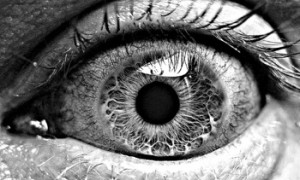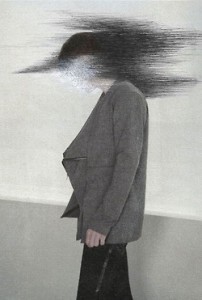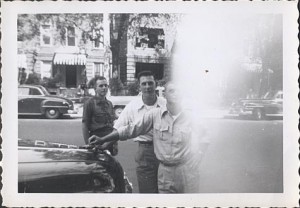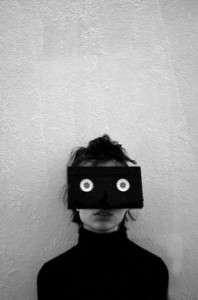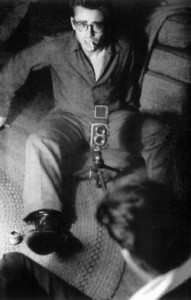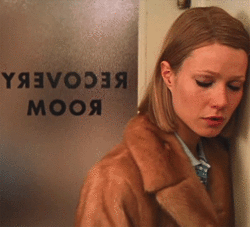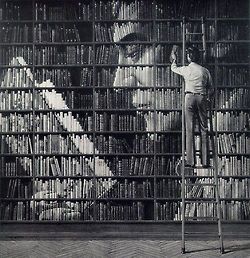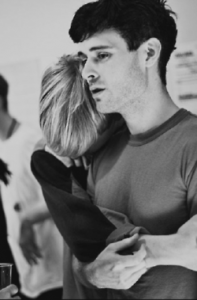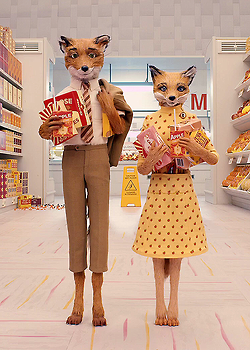Let me begin with a confession: I love the sound of artists complaining. It’s an acquired taste I know, like Japanoise or free jazz, but over the years I’ve grown more than used to it, hearing it less as the embittered protest of exclusion than as a kind of music, a song as sweet and tuneful as anything by Neina or Mozart. So I’d like to offer my own complaint here with this single qualification: that no earnest someone try to resolve it. Some mornings, this song is all I’ve got. And I can’t have anyone taking that away.
Let me begin with a confession: I’ve been pretty lucky, granted that rarest and most precious of all gifts that might come to an artist. A second chance. For years I banged against the unyielding walls of film, sat with the emulsion running between my fingers wondering when the perfect beautiful movies that ran inside might one day find their way onscreen. It never happened. But then one day, just by chance (which most artists consult like a map or atlas), I was offered a residency, a new home, and a warm seat by the computer, and began my affair (I’m reluctant, even now, to think of it as a marriage) with video. Video was my second chance. No more spending my rent money on a few minutes of footage that had to be played and replayed in the long months after, searching for signs of an inner life. In video there is no longer any need to produce pictures, others have already done that with alarming speed and skill. If film meant production, video is reproduction. There is time to find a place for all those pictures, to work out pleasing arrangements. I had graduated from Michael Snow to Martha Stewart.
As a video artist I try to make work the best way I can, and once it’s finished I get right down on the floor. You can find most of us here, the ones who have found their way to the tail credits, crawling and kneeling and bending in a style that would have made old-time dance maestros like Busby Berkeley clap with joy. The truth is, after the work is over, I like to submit. I offer my work to festivals and curators, bending low for the kicks. I try to think of this is a kind of psychic balancing. After exerting some kind of supposed mastery over the picture (which of course is no real mastery at all), it’s time to give it all away again.
When I turn to the programmer I find them busy grazing the field, chewing up everything in sight. The programmer is the monster of the now, the living encyclopedia, the one who has seen it all. They are Bentham’s panopticon come to life, stuffed to bursting with second hand experience and arcane facts. They combine the obsessive minutiae of a fan (True or false? Kenneth Anger toured Canada for three years wearing a New York Rangers jersey, which he had altered to read ‘anger’) with the totalizing command of a true professional. So while they might find my work too large or small, weak-willed and insubstantial, they’re invariably eager to see it, simply because they want to see everything.
The programmer is a glutton.
What I am hoping for of course is the equivalent of an aesthetic tummy tuck. I want my work to appear a bit leaner and more toned than it really is. But almost inevitably, the programmer/surgeon insists on putting genitals where the face belongs, they graft arms onto the chest of the work, they put the feet on backwards. In this misshapen state my work, and most others who insist (why? why?) on making short film/vids are cast against the screen, largely invisible even in the act of projection, working at cross purposes, like strangers stuck in an elevator.
This congregation of errors would never last in other fields. Imagine paper that dissolved as soon as it received ink or home designers who put toilets in place of the front door. But in the land of fringe media, these errors have become commonplace. Of course the program is too long, begins well after the announced time, suffers from terrible projection, and collects the work with the eye of a dazed kindergarten student. Or worse: the movies are gathered to make “an argument,” little soldiers marshalled in illustration of an idea (ideas, of course, are always more important than emotions, stories, flow.)
For many years I sat huddled with others, our butts turned to cardboard, grimly content in the knowledge that THIS WAS THE LAST SCREENING OF FRINGE MOVIES IN THE WORLD. That’s why it had to be so long. There would never be another chance, no tomorrows. This evening was the last stand, and we held between us the last hope of a cinema so small it threatened always to vanish entirely. I can’t help being reminded of those folks who gathered their belongings, their families and friends, and made their way to the mountaintops, waiting for the world to end at the turn of the first millennium, every gesture of the natural world a sign of imminent, complete catastrophe. How disappointing to have to return to those abandoned homes when the new century turned just like every other day, and the old habits which used to sustain personality seemed hardly worth taking up again.
One day I got tired of the world ending.
I think I know why programs are generally sub-optimal. It’s very simple really. Programmers almost never watch the programs they place before their audience. They’re too busy. In the midst of seeing everything they jot down names and titles, plucked from the vagaries of memory. There’s just no time to see all that again (the programmer has a particular horror in watching work for a second time, not when there’s so much more to see! And even while the show rolls they’re far too busy to attend, trying to console artists, placate funders, deal with the vomit crisis in the bathroom). The programmer never sees the program, that task is left to its audience. And of course, the audience’s response is never considered a reflection on the program, but on the work and artists themselves. The program remains invisible to the programmer, both as they jot it down and set it into motion, and afterwards, at the bar, where the real talking goes on.
Some of my best friends are programmers. While I am in a nearly constant state of lazy arousal when we speak (I am still young enough to imagine my friends are the most beautiful and brilliant of them all) their programs never give me a hard-on. I’ve stopped wondering why.
When I’m down on the floor submitting, and the shiny dark toes I see in front of me belong not to a programmer but a curator, the situation changes. Curators are always attached to architecture and space, they are keepers of the frame. The situation most enjoy (or is it only habit and inertia?) is the gallery. My favourite thing to do is to slip into galleries between shows, when the walls are perfectly blank. What I am met with are exactly two kinds of hope. The first is a narcissist’s hope that one day, perhaps, I might have a place on these walls. But after the first thirty or forty shows (“Hmm, I’m not here either…”) this has pretty much faded, giving way to another, more substantial hope. What I want is an art that will show me, demonstrate to me, initiate me into new kinds of happiness. Better still if it might transmit the thing itself, allow me to leave the white cube with some new capacity, an undreamt orifice of pleasure. Usually I am disappointed. I am confronted by objects and events that are so much less than what I need. And while I am heartened, sometimes, by the introduction of motion pictures in the gallery space I know that these flickers are just shadows of the infinite cinema which lies on those white walls, which are the addition of all colour and sound, all pictures. It seems we are always condemned, as viewers, to watching something less. At the same time we are cruelly reminded, surrounded by all that blank drywall, that the infinite is just around the corner.
I think of this work, this art, as something that gets in the way of my hope. It is a stain on my expectation, part of an excremental culture (So many objects! Such a rich variety of disappointment!), which leads me inevitably to this conclusion:
The curator is the one who shits in public.
Whether the work is thrilling or banal, the curator is made to sit in the mess, there’s no escaping it, and this offers at least the possibility of reflection, asking what happened and why.
There’s one other thing. When I began making small movies there seemed little difference between the most well heeled amongst us and the very bottom. There were few fests and fewer avant safe houses, those grubby microcinemas run on potato chips and good faith where the same band of disaffected beer drinkers could be counted on to sit through just about anything. There just wasn’t much to get, then, so a first timer could enjoy the same visibility as someone like, say, Joyce Wieland. Being completely ignored offered us enormous freedom, and of course, the thrilling feel of exclusion, and not belonging. Oh yes, we were outsiders alright. You see? We can walk anywhere, do anything, and no one notices at all. We held our invisibility to us like a shield.
With the entry of the motion picture into the gallery system this has changed. There are some select few whose work is not simply visible, but ubiquitous, benchmarks for the field. They have books, and monster shows, and a commanding global presence. Some are really sculptors or painters, but along the way they’ve stooped to pick up a Bolex, or had someone else do the stooping, and cranked out a little conceptual bonbon. These figure prominently in the new, rewritten, state of the art. Nevermind that some poor avantiste in a city no one can find on a map performed the same ablutions with her wind-up camera twenty years before. She made the terrible mistake of only making movie art, while the other one, the sculptor say, is clearly on the side of galleried angels.
There are the gallery artistes, and then the others, the ones who continue to toil in the near invisibility of the festival circuit, where their work jams with other small moments, largely ignored, passing by even quicker than its projection speed. And then there are those who can’t even get their work into the circuits which presently exist, the off-off-off broadways of the media world, who have decided to go internet, or project behind a friend’s band, in living rooms and bars. All of this is the underclass, created on the one hand by the art world, and on the other by a digital technology which has made the generation of motion pictures easier than ever. Clearly, there are too many images made in some parts of the globe, while others remain woefully unrepresented.
Atop this mound of too many makers the programmer can be found, busily lifting up each dark corner, looking, restlessly looking at everything. While the curator may be seen closer to the bottom of the pile, squeezing out a dump, the experience already distilled somehow, rarefied and recoded. So what do I want? I only want what everyone else wants. I want everything. And of course hasty and impatient (television has trained me well), I want it all now. But in the end, only programmers and curators get what they want, despite the frustrations of institutional imperatives, corporate nightmares, impossible boards. At the end of the day, the work (Is it too much to say it is their work which is on display?) is there for all to see, while the artists wait at the door, tirelessly submitting, singing our songs of complaint.
If only I didn’t find the music so satisfying. My work, the work of my peers, often finds its resting place and resolution in this music. Sure it’s not enough, but that’s just the point isn’t it? If the shameless acts of display and exhibition were satisfaction itself, the music would have to stop. The complaining would end. And this is where we’re prepared to draw the (bottom) line. This far and no further. You can’t take this away from us. This is the winter, spring, summer and fall of our discontent.
